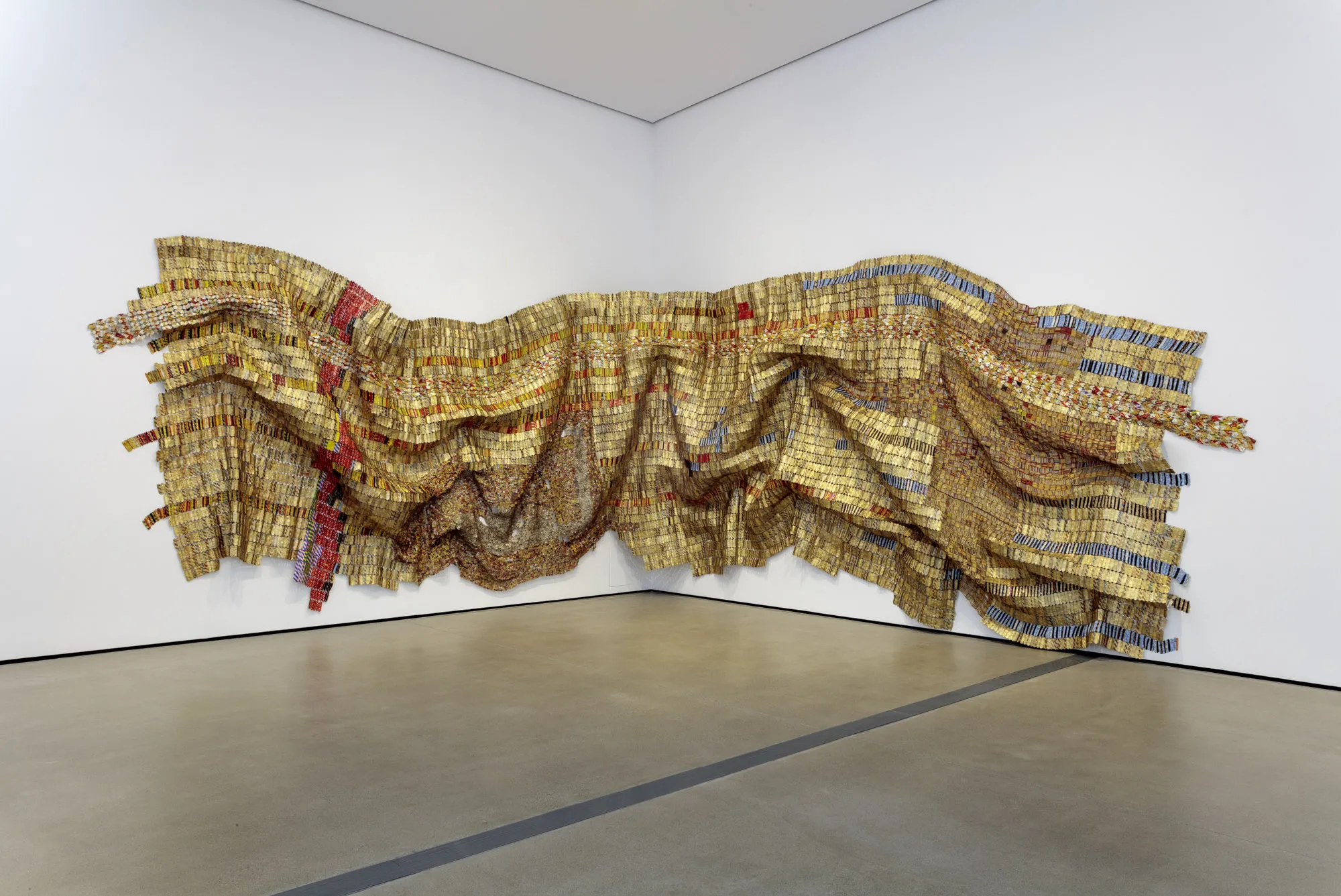Wuideke ( 11 )

Performance synopsis from Haniyyah Tahirah and M’Baye Campbell-Kante
Wuideke in the Ewe language of Ghana translates to the number 11. The number 11 is a highly vibrational and spiritually significant master number that symbolizes spiritual enlightenment, intuition, illumination, spiritual awakening, creativity, self-expression, and mysticism.
This piece incorporates spoken word and contemporary dance with West African and Afro Brazilian movements to the sounds and rhythms of traditional West African instruments the Djembe drum and the 21-stringed instrument known as the Kora, dating all the way back to the Malian Empire before the colonization of Africa. The movements and rhythms used within this work connect to what our Indigenous ancestors used to connect to higher forms of spirituality and mysticism.
The beautiful installation showcased behind Haniyyah and M’Baye, entitled Intermittent Signals (2009), is the work of Ghanaian born artist El Anatsui, well-known for his large-scale sculptures incorporating thousands of recycled materials such as bottle caps, aluminum packaging, and copper wire which he weaves into intricate and beautiful works of art. While spending time in Nigeria, El Anatsui found his serendipity; he took the degrading factors of colonialism and recycled materials, mixed it with his African roots and transformed it into divine relics of admiration. He put on notice what the continent has and is currently going through. Turning the embedded history and effects of European colonialism, slavery, and global trade into beautiful works of art, that uplifts and inspires the observer.
In the words of El Anatsui, “I am changing the meaning of bottle caps. Metaphorically I am working with the lifting of the spirits.”
Wuideke is a performance inspired by Yoruba spiritual beliefs practiced throughout Nigeria and the artistic journey of Anatsui, a man influenced by his indigenous roots and environment while expressing the inner qualms of oppression mother Africa has experienced. The hues of red, blue and gold being constant and interwoven in Intermittent Signals inspired performing artists to connect each color with specific divinities within Yoruba spirituality, traditionally referred to as Orisha. Each Orisha has its own attributes, movements, and forces of nature.
The red used in the piece represents both Oya and Shango, their attributes include fire, thunder, lightning, strength, winds of change, storms, progression, and rebirth. The movements include strong wind-like and twirling movements. The gold represents Oshun who is ascribed to sensuality, beauty, fertility, gracefulness, healing, and flowing movements. The blue represents Yemoja, the Mother of Waters and all Orishas who rule over the surface of the ocean, and is associated with the moon. She is considered the protective energy of the feminine force and governs everything pertaining to women, particularly childbirth, conception, parenting, child safety, love and healing. Her movements mirror the waves and ripples of water that will be performed throughout the piece with other Orisha inspired movements. This spirituality is indigenous to the very same country where Anatsui was inspired to create many of his works.
In conclusion, Wuideke is the journey of an artist digging into his African roots thus taking the environmental effects of colonialism and turning it into artistic gold.
“You can look at the world through your eyes, or you can look at the world through your mind.” —El Anatsui